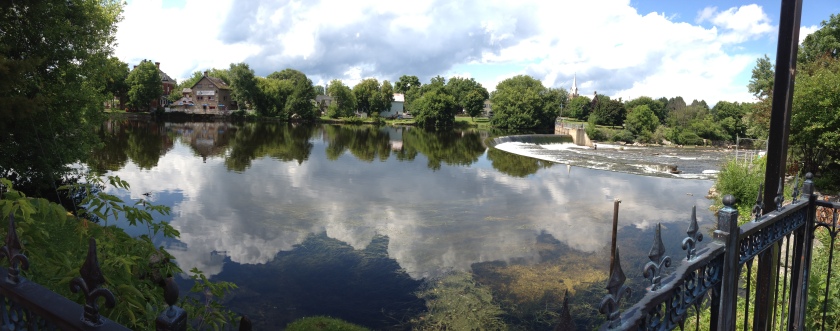A number of interesting buildings around town were designed by Francis Sullivan, an adherent/colleague/disciple of the famous American architect Frank Lloyd Wright and the Prairie School of architecture. The following bike route visits a number of Sullivan’s surviving works within Ottawa. This ride is approximately 14km long.
.
Our tour begins in Rockcliffe Park at 108 Acacia Avenue where sits this grand old house, one of Sullivan’s early designs upon his return from working with Frank Lloyd Wright in 1907. The Prairie School aesthetic is not as evident in the exterior detailing of this majestic home as they are in Sullivan’s subsequent designs.

Next stop – The Francis Sullivan House in Sandy Hill at 346 Somerset St E.
n 1911 Sullivan started up his own successful independent practice from which he designed this home for himself in 1914. Here the influence of the modernist Prairie School style is on full display.

To get to our next stop I rode up Somerset, through the Ottawa U campus, and over the pedestrian/bike bridge across the canal. I then pedaled along the Rideau Canal Western Pathway in the direction away from Parliament Hill as far as Patterson Creek, crossed Queen Elizabeth Drive and followed the creek to our next destination, the O’Connor St Bridge. Another example of his early works (1907), It’s a solid looking little bridge that has withstood the test of time.

A short distance up Patterson Creek at 6 Allan Place sits the following Sullivan house design.

Our next Sullivan building is located at the corner of James and Bay. To get there I rode over to Percy St which has traffic lights and a bike lane to help cyclists ride safely under the Queensway and across busy Chamberlain and Catherine Streets. I rode over to Bay St which is a one way heading north WITH a bike lane, that brought me right to the Patrick J. Powers House. It was originally built around 1887 but transformed by Sullivan in 1915 in to the beauty that it is now.

Over to Arthur St where once stood the No. 7 Fire Station which Sullivan designed in 1912. The exterior has been greatly modified since the mid-1960s when it was acquired by the Bukowinian Greek Orthodox Holy Trinity Church, as per a land and property transfer described in this Urbsite post. Only a few of Sullivan’s details remain, most notably the corners of the building. The rest have been smothered or altered.

The final two buildings are located on roads just off Wellington St, a busy street I consider to be one of Ottawa’s most dangerous stretches to ride down resulting in the constant threat of cyclists being doored or squeezed off the road by impatient drivers. The sharrows painted on the road (bike logos with two chevrons) are meaningless to most drivers and ignored. I avoided Wellington by following the route described on the above map, which includes carrying my bike down the stairs at the end of Primrose ave to the bottom of Nanny Goat cliff.
Next destination is École Sacré-Cœur at 19 Melrose Avenue in Hintonburg, which is no longer a school, but a residence, as one of the residents explained to me as I was taking the photo below.

Final stop – the Edward P. Connors House at 166 Huron Ave North. Some wonderful Prairie Style detailing and proportions to be seen in this example as well.

So there you have it. Thank you Francis Sullivan!














